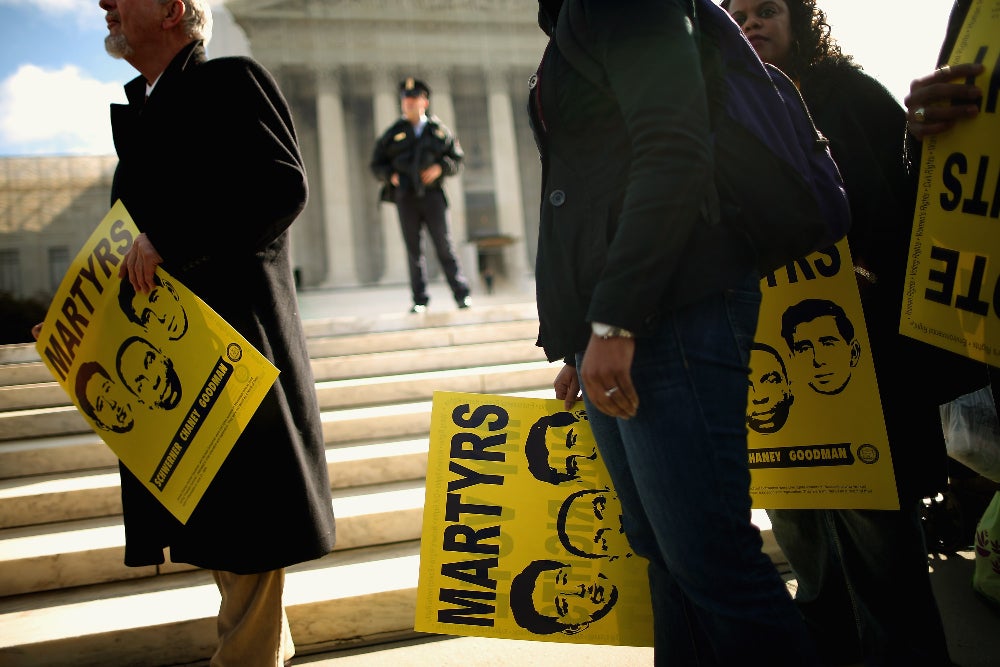I was a teenager the first time I saw the movie Mississippi Burning, and despite knowing even at that young age America’s capacity for hate and racism, I remember thinking: “Nah, that can’t be real.”
Suggested Reading
But the 1988 film was indeed loosely based on a real event that involved the lynchings of three civil rights activists in 1964 in Philadelphia, Miss.—killings that were reportedly committed by the Ku Klux Klan and sanctioned by a local deputy sheriff. Now, case files, photographs and other records related to the investigation into the violent and hateful crimes have been made available for public viewing for the first time.
Politico reports that the records detailing the investigation into the deaths of Freedom Summer activists James Chaney, Andrew Goodman, and Michael Schwerner in Neshoba County were made public at the William F. Winter Archives and History Building in Jackson after being sealed for decades and after being transferred from the state attorney general’s office to the Mississippi Department of Archives and History in 2019.
From Politico:
The records include case files, Federal Bureau of Investigation memoranda, research notes and federal informant reports and witness testimonies. There are also photographs of the exhumation of the victims’ bodies and subsequent autopsies, along with aerial photographs of the burial site, according to an announcement from the Mississippi Department of Archives and History.
The collection is being stored in three catalog records: Series 2870 houses the attorney general’s research files, Series 2902 houses the FBI memos and Series 2903 houses the photographs.
The three Freedom Summer workers, all in their 20s, had been investigating the burning of a black church near Philadelphia, Mississippi when they disappeared in June of 1964.
A deputy sheriff in Philadelphia had arrested them on a traffic charge, then released them after alerting a mob. Mississippi’s then-governor claimed their disappearance was a hoax, and segregationist Sen. Jim Eastland told President Lyndon Johnson it was a “publicity stunt” before their bodies were dug up, found weeks later in an earthen dam.
Out of 19 white men who were indicted for the killings, only seven were convicted of violating the victims’ civil rights (but not murder?) and none of them ever served more than six years in prison. It wasn’t until 2004 that the state attorney general’s office reopened the case, which led to Klan leader Edgar Ray Killen—who died in prison in 2018—being convicted on manslaughter charges.
Side note: If I wanted to be petty, I’d point out how this case is a perfect example of why Critical Race Theory—an academic study that focuses in part on how race affects law and law enforcement—should be taught to students and the fact that conservatives’ obsession with banning CRT has nothing to do with indoctrination and everything to do with sweeping and burying American stories like these deep under the proverbial rug.
The story of Chaney, Goodman and Schwerner is just one of many that should be well-documented and made available for everyone to see. That America is still this America and true progress depends on us being honest about what we’re progressing from.
Straight From 
Sign up for our free daily newsletter.



